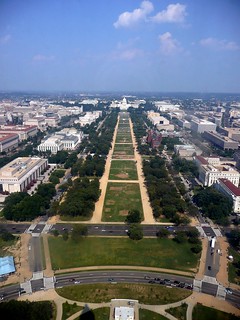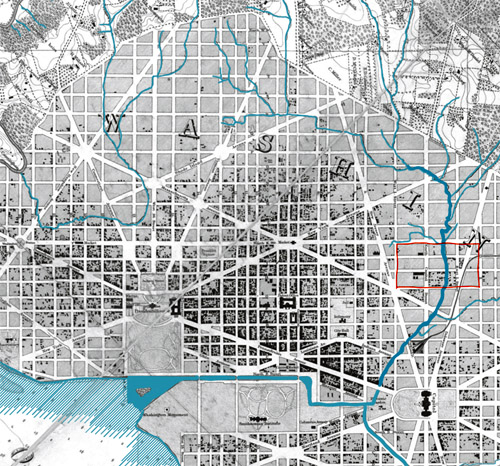 Photo by Shih-Pei Chang on flickr. |
DC’s art community was chagrined to see the Hirshhorn cancel plans to build an inflatable “bubble”. This is a good time to ask, “what now?” The bubble would have been a striking sculptural statement, but is that what the National Mall should be?
Should the Mall be a singular urban space, defined by consistent neoclassical style, or an architectural sculpture garden for individual masterpiece buildings? Either vision could be great, but with no agreement on what the Mall should be, neither is happening.
The question is not really about artist preference for classical or modern styles. That’s a distraction. Rather, the question is whether the focus of the National Mall should be its open public spaces, or its buildings.
If the focus is the public space, then that space is better defined by framing buildings that have a consistent character.
Many of the best urban public spaces in the world are “outdoor rooms, ” where a plaza or park is framed by surrounding buildings that act as “walls.” The activity mostly takes place in the central space, but the buildings define the central space’s character. The more consistent the surrounding buildings, the stronger that character.
On the other hand, if the focus is the individual buildings, then it’s more interesting to have a wider variety of styles. No one wants to see an art gallery where every painting is the same, after all.
Historic plans envisioned the Mall as a singular space among neoclassical buildings, with the Capitol as major landmark. But that idea has given way in recent history to much more individualized buildings. Besides the Hirshhorn, there’s the the National Museum of the American Indian and the under-construction National Museum of African-American History and Culture.
It would be nice to have a great public space and a variety of architecture, but unfortunately the two visions are mutually exclusive. Urban walls need consistency, and sculpture gardens need variety. The more we push in one direction, the worse the Mall will function as the other. So which is it?
Urbanistically, neither option is necessarily better than the other. The Mall is such a large space, with such large buildings, that the normal rules of Jane Jacobs urbanism don’t generally apply. There will be few corner stores or sidewalk cafes no matter what, and no mixed use.
I like the American Indian museum, and I think I would have liked the Hirshhorn bubble. But I’m not sure I’d sacrifice the Mall’s overall character for too many more standalone masterpieces. Either way, it would be nice to make a decision and then stick with it.
What do you think?
 Cross-posted at Greater Greater Washington.
Cross-posted at Greater Greater Washington.
June 6th, 2013 | Permalink
Tags: architecture, parks















